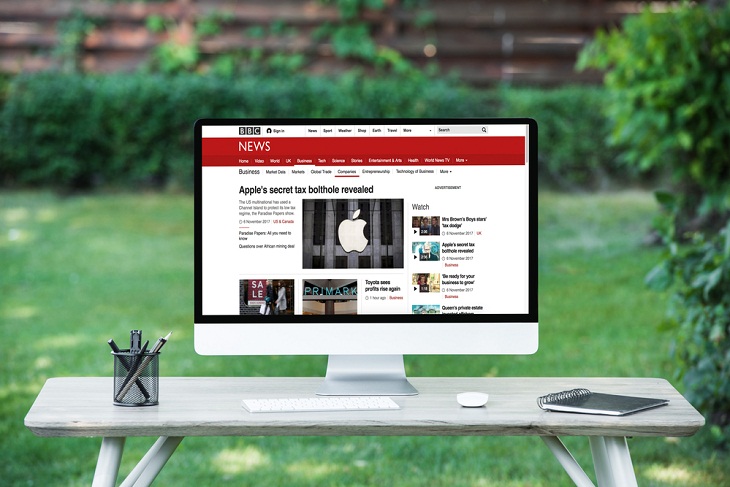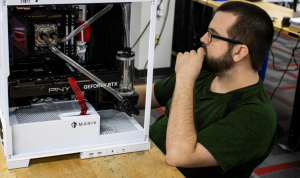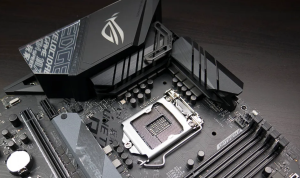How to Choose the Right Monitor for Your Needs sets the stage for a comprehensive guide that helps you navigate the often-overwhelming world of monitors. With so many options available, from size and resolution to refresh rates and panel types, understanding what fits your specific needs is crucial. Whether you’re a gamer, a professional designer, or simply someone who wants to enhance their home office setup, this guide will equip you with the essential knowledge to make an informed decision.
In recent years, the world has seen a tremendous shift in how we approach technology, communication, and daily life. With the advent of smartphones, social media, and artificial intelligence, our interactions and experiences have been transformed in ways that were once unimaginable. Let’s take a deeper dive into this changing landscape and explore its implications for our personal and professional lives.The rise of smartphones has arguably been one of the most significant technological advancements in the last decade.
These compact devices put the power of the internet, communication, and information at our fingertips. With a simple swipe or tap, we can connect with friends and family, access a world of knowledge, and even manage our finances. However, this convenience comes with a set of challenges, particularly concerning our mental health and social dynamics.Social media platforms like Facebook, Instagram, and Twitter have further revolutionized our communication styles.
They have enabled us to share our thoughts and experiences instantaneously, bridging gaps across long distances. While this connectivity can foster relationships and facilitate collaboration, it has also led to issues like cyberbullying, misinformation, and the pressure to maintain a curated online persona. The quest for likes and validation can create a toxic environment, leading to anxiety and self-esteem issues for many users.As we navigate these complexities, it’s essential to strike a balance between our online and offline lives.

Setting boundaries around social media usage can help mitigate its potential negative impacts. For instance, designating specific times for checking notifications or engaging with social media can promote a healthier relationship with these platforms. Additionally, fostering in-person connections can enrich our social lives and provide a sense of belonging that digital interactions often lack.Artificial intelligence (AI) is another game-changer that has permeated various aspects of our lives.
From virtual assistants like Siri and Alexa to advanced algorithms that shape our online experiences, AI is reshaping industries and the way we live. In the workplace, AI can enhance productivity by automating repetitive tasks, allowing employees to focus on more strategic initiatives. However, this widespread automation raises questions about job displacement and the need for reskilling.As AI continues to evolve, it is crucial for professionals to adapt and embrace lifelong learning.
Upskilling and reskilling initiatives can empower individuals to stay relevant in an increasingly automated workforce. Companies can play a pivotal role by investing in employee development and creating a culture that fosters continuous learning. This proactive approach benefits not only the employees but also the organization, as it cultivates a skilled and agile workforce.Sustainability has also become a central theme in our global discourse, driven by both consumer demand and corporate responsibility.
As awareness of climate change and environmental degradation grows, individuals and businesses are reevaluating their practices and seeking sustainable alternatives. From eco-friendly products to renewable energy sources, the push for sustainability is reshaping markets and consumer behaviors.For businesses, adopting sustainable practices can lead to long-term benefits. Companies that prioritize sustainability often enjoy enhanced brand loyalty and a competitive edge in the marketplace.
Consumers are increasingly seeking out brands that align with their values, prompting businesses to innovate and create eco-conscious products. This shift not only addresses environmental concerns but also promotes a more ethical and responsible approach to consumption.In addition to sustainability, the importance of mental health awareness has gained traction in recent years. The stigma surrounding mental health issues is gradually diminishing, leading to more open conversations about well-being.
Employers are recognizing the need to support their employees’ mental health, implementing initiatives like flexible work arrangements, mental health days, and employee assistance programs.Creating a supportive workplace culture that prioritizes mental health can enhance employee satisfaction and productivity. Encouraging open dialogue about mental health and providing resources can empower employees to seek help when needed. Additionally, promoting work-life balance is vital in preventing burnout and fostering a healthier workforce.As we look ahead, it is clear that the interplay between technology, sustainability, and mental health will influence the trajectory of our society.
Embracing innovation while remaining mindful of our well-being and the environment will be crucial in navigating the complexities of modern life. By fostering a culture of adaptability and responsibility, we can create a brighter future for ourselves and the generations to come.In conclusion, the evolving landscape of technology and its impact on communication, work, and our personal lives presents both opportunities and challenges.
As we navigate this new era, it is essential to prioritize our mental health, embrace sustainability, and adapt to the changes brought about by artificial intelligence. By doing so, we can forge a path that leads to a more connected, responsible, and resilient society.





